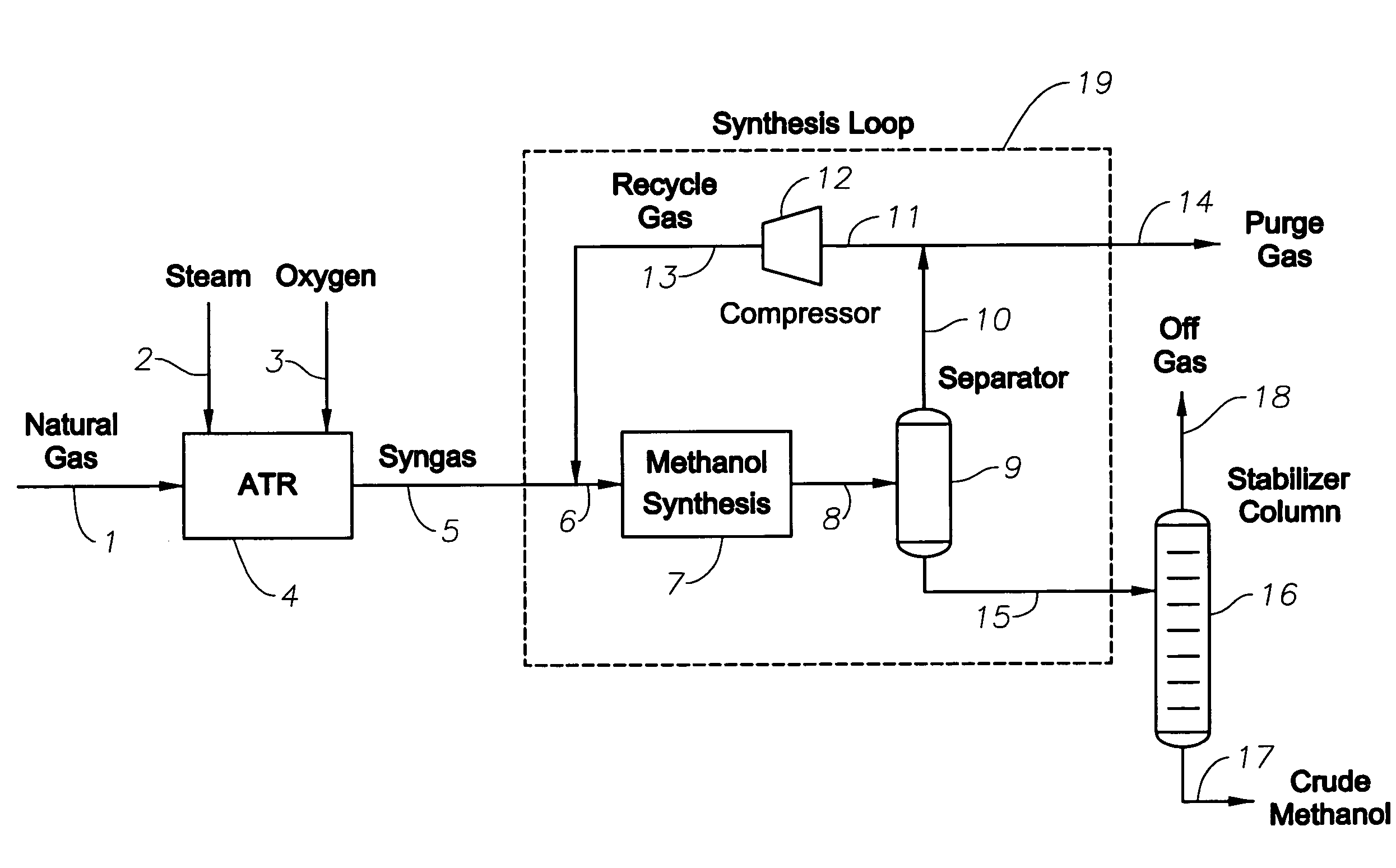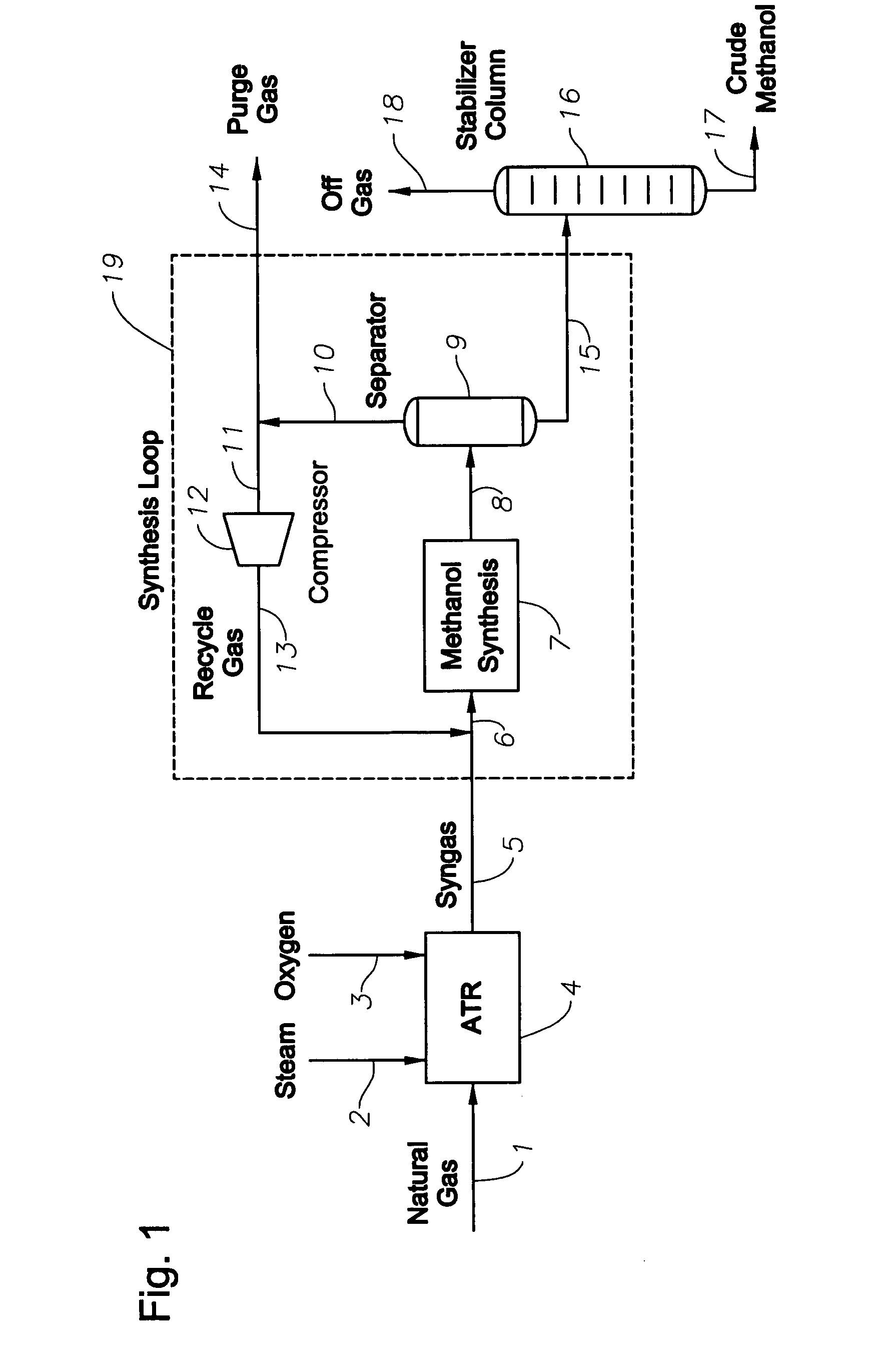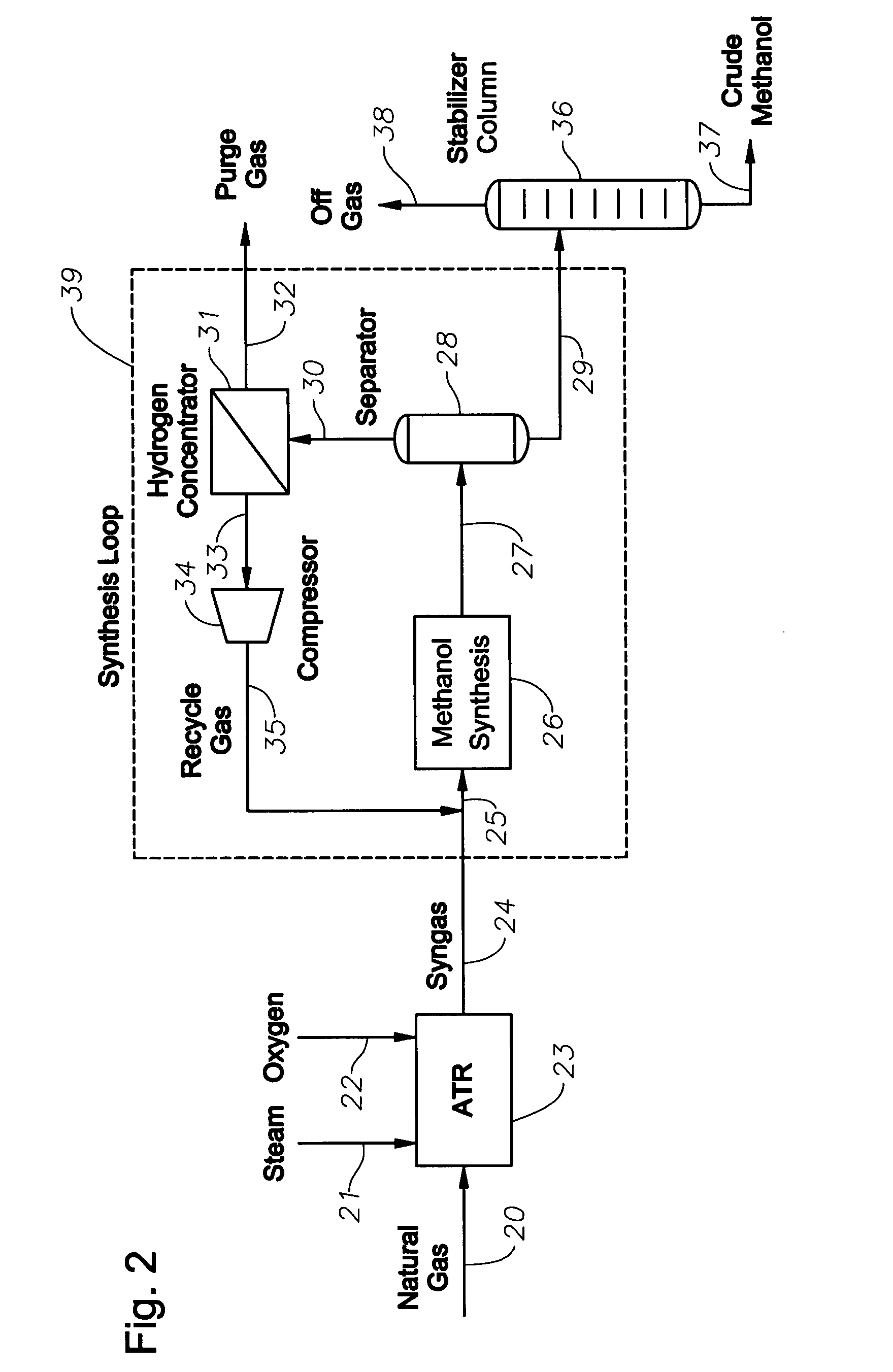Synthesis gas production and use
a technology of synthesis gas and synthesis gas, which is applied in the field of production and use of synthesis gas (syngas), can solve the problems of lower water production and lower hydrogen consumption, and achieve the effect of reducing cost and efficiently utilizing hydrogen
- Summary
- Abstract
- Description
- Claims
- Application Information
AI Technical Summary
Benefits of technology
Problems solved by technology
Method used
Image
Examples
example 3
[0114]In this example, the ATR was operated in an identical fashion to that of Examples 1 and 2. The syngas product from the ATR was mixed with the import hydrogen stream from the steam cracker (80 mol % H2, 20 mol % methane), at a rate of 713 kmol / h. The stoichiometric number, SN, of the syngas feed to the synthesis loop was increased from 1.84 to 2.03, bringing the hydrogen content just above the stoichiometric requirement. The SN value in the synthesis reactor feed was 2.77, which was sufficiently rich in hydrogen for good synthesis reactor operation. The methanol production rate was 2095 metric tons per day, which was an improvement over either Examples 1 or 2. The water content in the crude methanol was an acceptably low value of 4.5 wt %.
[0115]This example is demonstrated in FIG. 3. The natural gas stream 40, the steam stream 41, the oxygen stream 42, are fed into the reforming reactor 43, in this example an ATR. The syngas stream 44 exits the reforming reactor 43 and a hydrog...
example 4
[0116]In this example, the import hydrogen stream (713 kmol / h, 80 mol % H2), was mixed with the natural gas feed to the ATR. The import hydrogen contained 142 kmol / h of methane, so the natural gas feed rate was reduced from 3150 to 3008 kmol / h to keep the feed rate of carbon atoms to the ATR the same as in Examples 1-3. The feed preheat temperatures, oxygen:carbon and steam:carbon ratios were identical to Examples 1-3.
[0117]As shown in Table 3, the ATR exit temperature was reduced from 1055 to 965° C., while the hydrocarbon conversion increased from 92.9 to 97.3%, compared with Examples 1-3. The SN value of the ATR syngas was 2.07. This value was above the stoichiometric requirement for methanol, and resulted in a synthesis reactor feed SN value of 3.67. The crude methanol had an acceptably low water content of 5.4 wt %. The methanol production rate was 2274 metric tons per day, representing an improvement over each of the Examples 1-3.
TABLE 3Simulation results for Examples 1–4.Exam...
PUM
| Property | Measurement | Unit |
|---|---|---|
| mol % | aaaaa | aaaaa |
| temperature | aaaaa | aaaaa |
| pressure | aaaaa | aaaaa |
Abstract
Description
Claims
Application Information
 Login to View More
Login to View More - R&D
- Intellectual Property
- Life Sciences
- Materials
- Tech Scout
- Unparalleled Data Quality
- Higher Quality Content
- 60% Fewer Hallucinations
Browse by: Latest US Patents, China's latest patents, Technical Efficacy Thesaurus, Application Domain, Technology Topic, Popular Technical Reports.
© 2025 PatSnap. All rights reserved.Legal|Privacy policy|Modern Slavery Act Transparency Statement|Sitemap|About US| Contact US: help@patsnap.com



